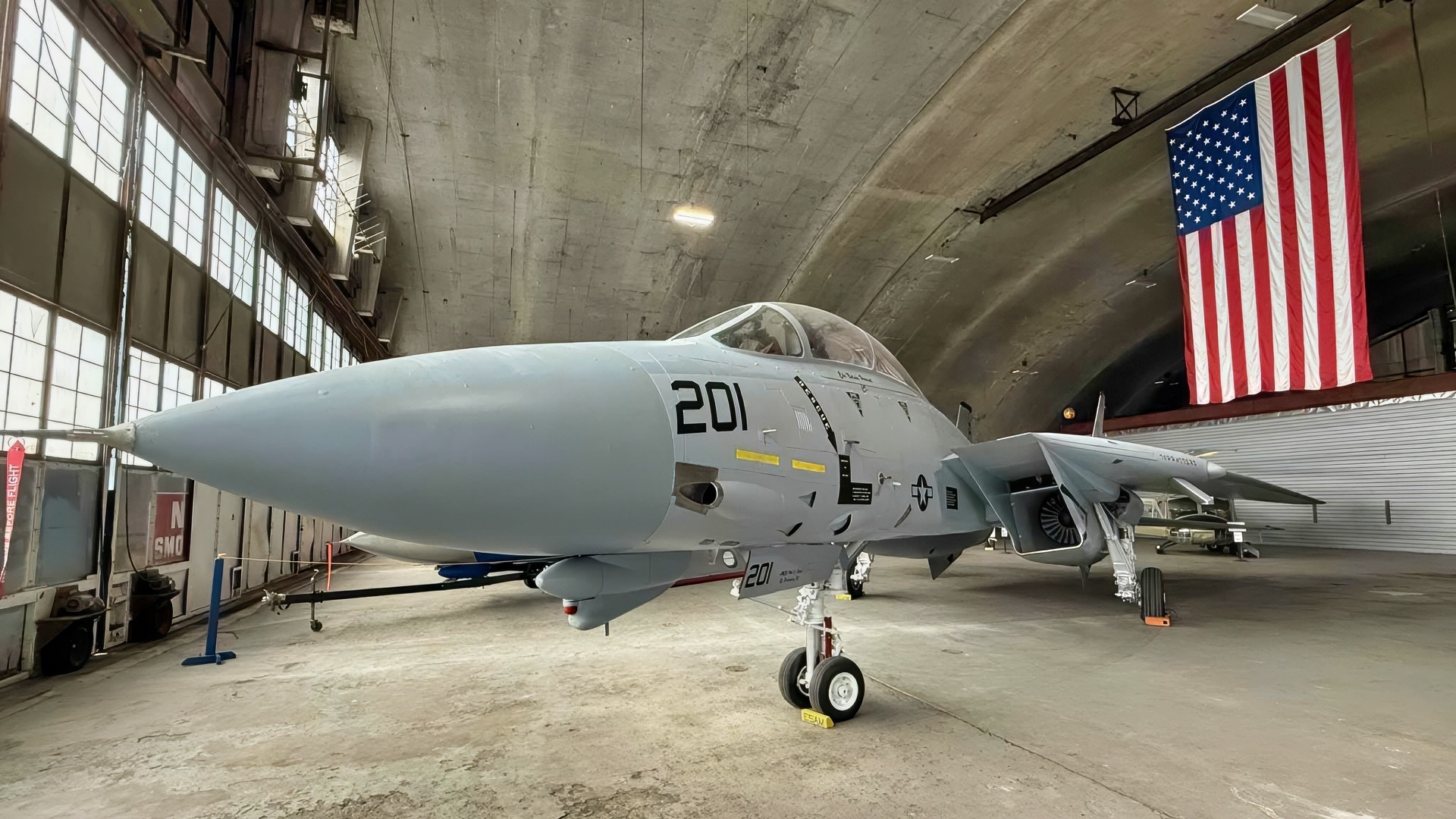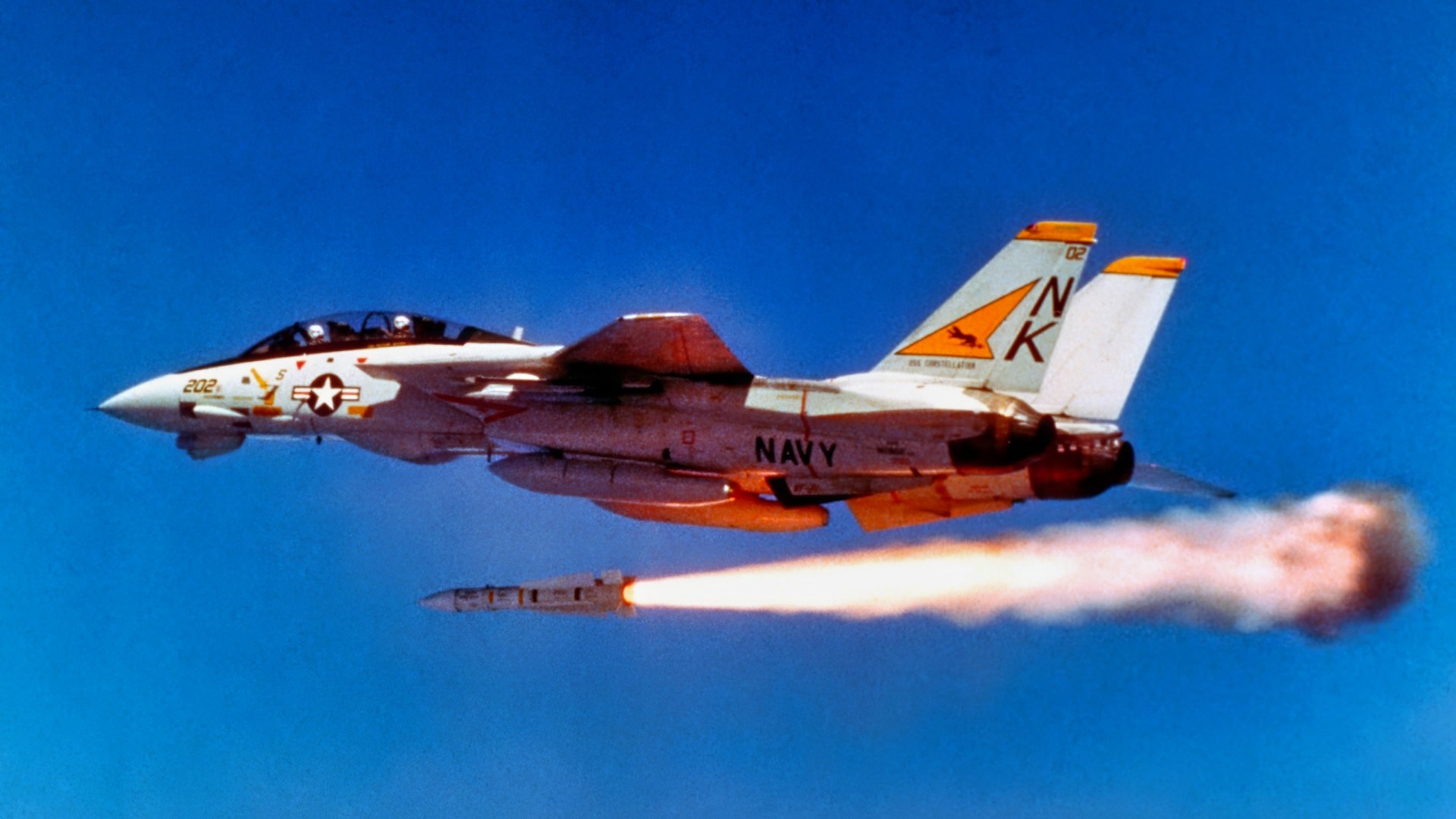Key Points and Summary – Despite nostalgia fueled by films like Top Gun, a rational analysis shows the U.S. Navy does not truly “miss” the F-14 Tomcat.
-Its retirement in 2006 was a sound strategic and financial decision. The F-14 was an expensive, maintenance-heavy interceptor designed for an obsolete Cold War mission.

The F-14 Tomcat, famed for its role in “Top Gun” and its mission to protect U.S. carrier groups, underwent a significant transformation in its later years.
Dubbed the “Bombcat,” the F-14B variant was repurposed with advanced systems like the LANTIRN pod, enabling precision-guided munitions delivery from high altitudes.
-Its key features—the swing-wing design, notoriously unreliable early engines, and a two-person crew—are ill-suited for modern naval aviation.
-The F/A-18 Super Hornet, while less dramatic, is a more versatile, cost-effective, and technologically relevant aircraft for the 21st-century fleet’s multi-role requirements.
Does The US Navy Really Miss the F-14 Tomcat?
WARSAW, POLAND – The F-14 Tomcat remained in the US Navy inventory for over 30 years.
It was retired in 2006, and most of the pilots who flew the aircraft have long ago moved on to the F/A-18E/F Super Hornet or another platform – if they are even still on active flight duty.
Despite the aircraft being out of service for almost two decades, a recurring theme suggests that the US Navy “misses” the F-14.
This sentiment is prompted by several factors, not the least of which is the image created for the aircraft in the 1986 film Top Gun, starring Tom Cruise.
One of those stimuli is the fact that every time a film is re-released, the same questions are raised about “why did we ever retire the aircraft?”
The release of the long-anticipated sequel, Top Gun: Maverick, and articles like this one caused an explosion of that kind of sentiment.

Iran F-14 Tomcat Fighter. Image Credit: Creative Commons.
What is usually lacking from anyone discussing the US Navy’s “missing” F-14 is a clear definition of what that word actually means to the person using it.
When you look past the superficial statements and recollection of fond memories, what you discover is that what some in the US Navy feel about the Tomcat is nostalgia.
However, their pining away for the aircraft is not based on any rational evaluation of the fleet’s requirements for a point-defense fighter, nor on how those requirements have evolved over the years.
There may be those in today’s Navy who would love to see the F-14 in action again, but they know enough to understand that it makes no sense in the 21st century.
Why The F-14’s Time Has Passed
For the US Navy, there are few reasons beyond sentimentality for feeling a sense of loss over the F-14 Tomcat’s retirement from service.
Pilots and the fans of the Tomcat may miss the big, familiar profile of the aircraft – the thunderous noise, the impact of the plane slamming down on the flight deck – but that is not what made the aircraft so effective in its day.
However, much of what they miss about the aircraft is the exact attributes of its performance that render it of little use to the Navy.

F-14 Tomcat in Museum with US Flag. Image Credit: National Security Journal.
Meaning the decision to retire the aircraft in 2006 was based on concrete strategic requirements and financial rationality.
The replacement for the F-14, the multi-role F/A-18 Super Hornet, while not as impressive or dramatic in its performance, is a much better fit for the Navy’s modern-day combat requirements.
Why the F-14 Won’t Fly Ever Again
Some of those aircraft’s aspects that are part of the nostalgia, but are actually drawbacks in the current day:
Flight Performance
The F-14’s swing-wing design made it capable of more efficient cruising and fuel efficiency when its wings were fully deployed.
An impressive use of variable-geometry wings, but a feature that added a significant amount of weight to the aircraft. It was also a maintenance headache.
The other aspect of the F-14 that is “missed” by some is the dramatic afterburner takeoffs in the early dawn hours seen in the original Top Gun opening sequence.
However, the reality is that the TF30 engine, which was the original F-14A’s power plant, was one of the most unreliable power plants ever in a fighter.
Then there was the added problem that taking off in afterburner in the dark means you have just told everyone within 100 miles where you are – an operational security drawback of the worst kind.

F-14D Tomcat Fighter Image from National Security Journal
As such, the TF30 held the aircraft back from its real potential for most of its career in service. Approximately 50 aircraft were lost due to accidents, primarily due to compressor stalls that resulted in engine failures.
Those aircraft losses amounted to about $1.5 billion, to say nothing of the aircrews that were killed as well.
At the end of its service life, the final production aircraft were equipped with a new-generation GE F110-400 model that was finally the engine the aircraft needed.
Performance was smooth, and engine stalls ended due to the advanced digital controls of the F110.
Unfortunately, this was the swan song of the aircraft at this point.
There was no real constituency within the NAVAIR community to keep the aircraft in production, even in this new variant with the advanced engine.
Mission Requirements
The F-14 was designed as a pure interceptor to protect US carrier groups from Soviet Naval Aviation Tupolev Tu-22M bombers.
The F-14 was supposed to use the Hughes AWG-9 radar set and AIM-54 Phoenix long-range air-to-air missiles to shoot down the Tu-22M before it could launch a cruise missile at the carrier.
These anti-ship missiles were primarily the Raduga Kh-22 (AS-4) models that were replaced only in 2016 by the Kh-32 design.
But the pilots who are familiar with how the F-14 was employed back then point out that the Tu-22M was a “slow-moving lumbering target that could not maneuver, could not turn sharply, could not do anything to avoid an incoming AAM.”
“But the Phoenix had no chance of intercepting and taking down another fighter aircraft at the hands of a skilled pilot,” said one naval aviator I spoke with on the subject years ago. “This is why every time the US Navy fired a Phoenix at another fighter all we ever did was bomb the water. There were no kills with the Phoenix.”
Other fans of the aircraft want the two-man crew, consisting of a pilot and a dedicated Radar Intercept Officer (RIO), to be reinstated. But this is not a configuration that has much application in the present day.
Modern-day fighter aircraft are mostly not built in two-seat versions, not even for training purposes. The second seat adds weight and reduces space for fuel and avionics, and is not necessary in many naval aviation missions.
Last but not least, today’s F/A-18E/F employs the Maritime Augmented Guidance with Integrated Controls for Carrier Approach and Recovery Precision Enabling Technologies (MAGIC CARPET). This system greatly simplifies the process of landing a fighter on an aircraft carrier.

(Jan 31, 2009) An F/A-18 Super Hornet assigned to the “Tomcatters” of Strike Fighter Squadron (VFA) 31 launches from the flight deck of USS Theodore Roosevelt (CVN 71). The Nimitz-class aircraft carrier and embarked Carrier Air Wing (CVW) 8 are operating in the 5th Fleet area of responsibility and are focused on reassuring regional partners of the United States’ commitment to security, which promotes stability and global prosperity (U.S. Navy photo by Mass Communication Specialist 3rd Class Jonathan Snyder/Released)
Available data suggests that with this system, pilots are making single-digit flight path corrections on final approach instead of hundreds. They also land “significantly” closer to the target “wire” on the flight deck, according to results from using this system in the last decade.
The F-14 is not capable of using this system, which results in more errors during landing approaches and less accurate landings.
The F/A-18E/F is equipped with a fly-by-wire flight control system that interfaces with the MAGIC CARPET system. The F-154’s old hydromechanical system is not capable of leveraging this technology.
Ultimately, outdated technology in a very heavy airframe that incorporates little composites in its design is not a good match for today’s carriers.
F-14 Tomcat: The VHS Fighter of 2025
Some still love the F-14 just as we all feel nostalgic for many aspects of our past.
As much as we enjoyed the movies on old VHS tapes, it makes little sense to keep them around in the Blu-Ray generation or streaming.
About the Author: Reuben F. Johnson
Reuben F. Johnson has thirty-six years of experience analyzing and reporting on foreign weapons systems, defense technologies, and international arms export policy. Johnson is the Director of the Asia Research Centre at the Casimir Pulaski Foundation. He is also a survivor of the Russian invasion of Ukraine in February 2022. He worked for years in the American defense industry as a foreign technology analyst and later as a consultant for the U.S. Department of Defense, the Departments of the Navy and Air Force, and the governments of the United Kingdom and Australia. In 2022-2023, he won two awards in a row for his defense reporting. He holds a bachelor’s degree from DePauw University and a master’s degree from Miami University in Ohio, specializing in Soviet and Russian studies. He lives in Warsaw.
More Military
The U.S. Army’s Big M10 Booker ‘Light Tank’ Mistake Still Stings
The U.S. Navy Built Two Versions of the Littoral Combat Ship. Both Were a Mess.
The EA-18G Growler Has A Message for the U.S. Navy
Warship Goes Down Below the Waves: Navy F/A-18F Fighter Fires A Stealth Munition










